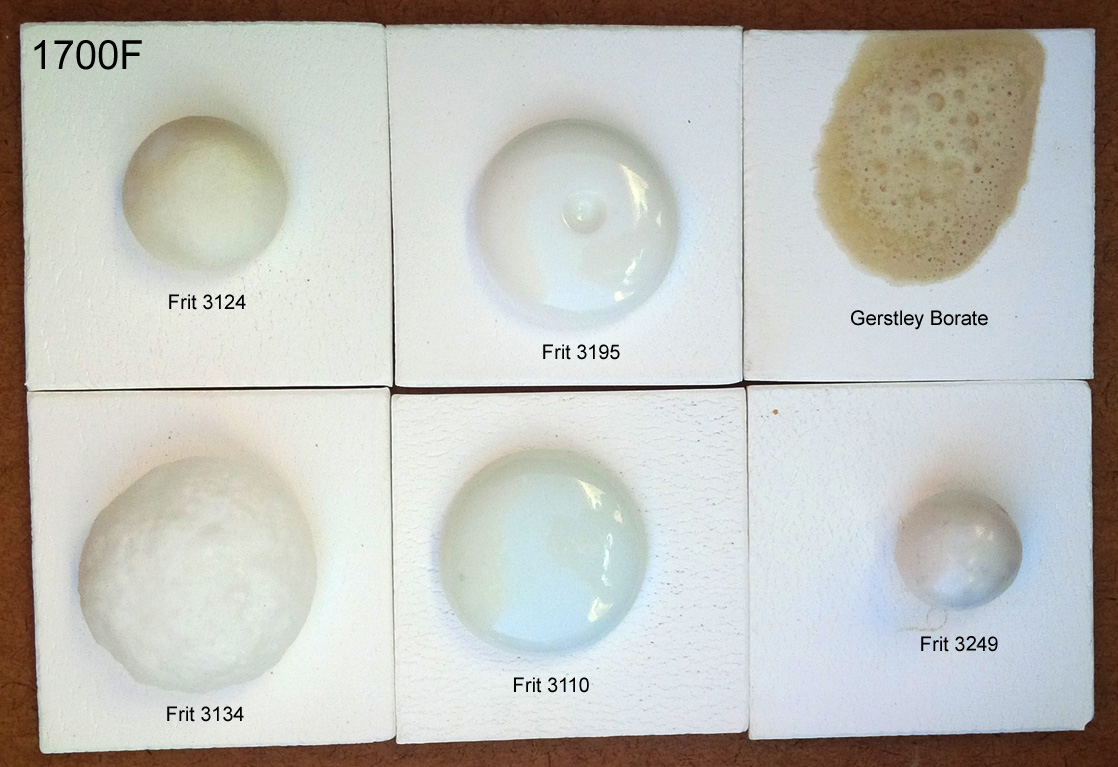These common Ferro frits have distinct uses in traditional ceramics
I used Veegum to form 10 gram GBMF test balls and fired them at cone 08 (1700F). insight-live.com/glossary/43">Frits melt really well, they do have an LOI like raw materials. These contain boron (B2O3), it is a low expansion super-melter that raw materials don’t have. Frit 3124 (glossy) and 3195 (silky matte) are balanced-chemistry bases (just add 10-15% kaolin for a cone 04 glaze, or more silica+kaolin to go higher). Consider Frit 3110 a man-made low-Al2O3 super feldspar. Its high-sodium makes it high thermal expansion. It works really well in bodies and is great to make glazes that craze. The high-MgO Frit 3249 (made for the abrasives industry) has a very-low expansion, it is great for fixing crazing glazes. Frit 3134 is similar to 3124 but without Al2O3. Use it where the glaze does not need more Al2O3 (e.g. already has enough clay). It is no accident that these are used by potters in North America, they complement each other well (equivalents are made around the world by others). The Gerstley Borate is a natural source of boron (with issues frits do not have).
Pages that reference this post in the Digitalfire Reference Library:
Ferro Frit 3110, Frit, Ferro Frit 3134, Ferro Frit 3124, Ferro Frit 3249, Ferro Frit 3195, B2O3, G1916Q - Low Fire Highly-Expansion-Adjustable Transparent, Where do I start in understanding glazes?, GBMF Glaze Melt Fluidity - Ball Test, Substitute Ferro Frit 3134, using glaze chemistry, in three glaze types , What has this low fire transparent glaze turned blue?, How to choose ceramic materials to source needed oxides, Frit, Boron Frit, Base Glaze, Calculated Thermal Expansion, 760-Common frits begin melting, 870-Gerstley Borate Melts Suddenly, Glaze Shivering

This post is one of thousands found in the Digitalfire Reference Database. Most are part of a timeline maintained by Tony Hansen. You can search that timeline on the home page of digitalfire.com.
